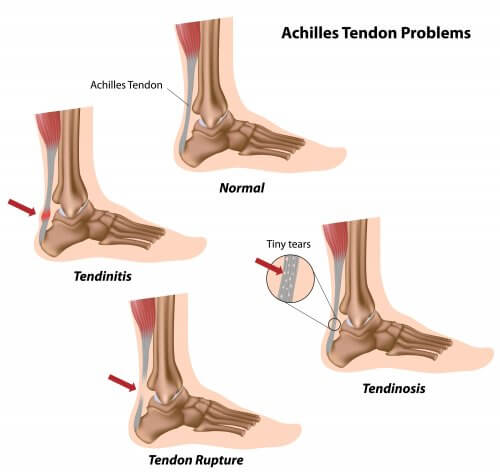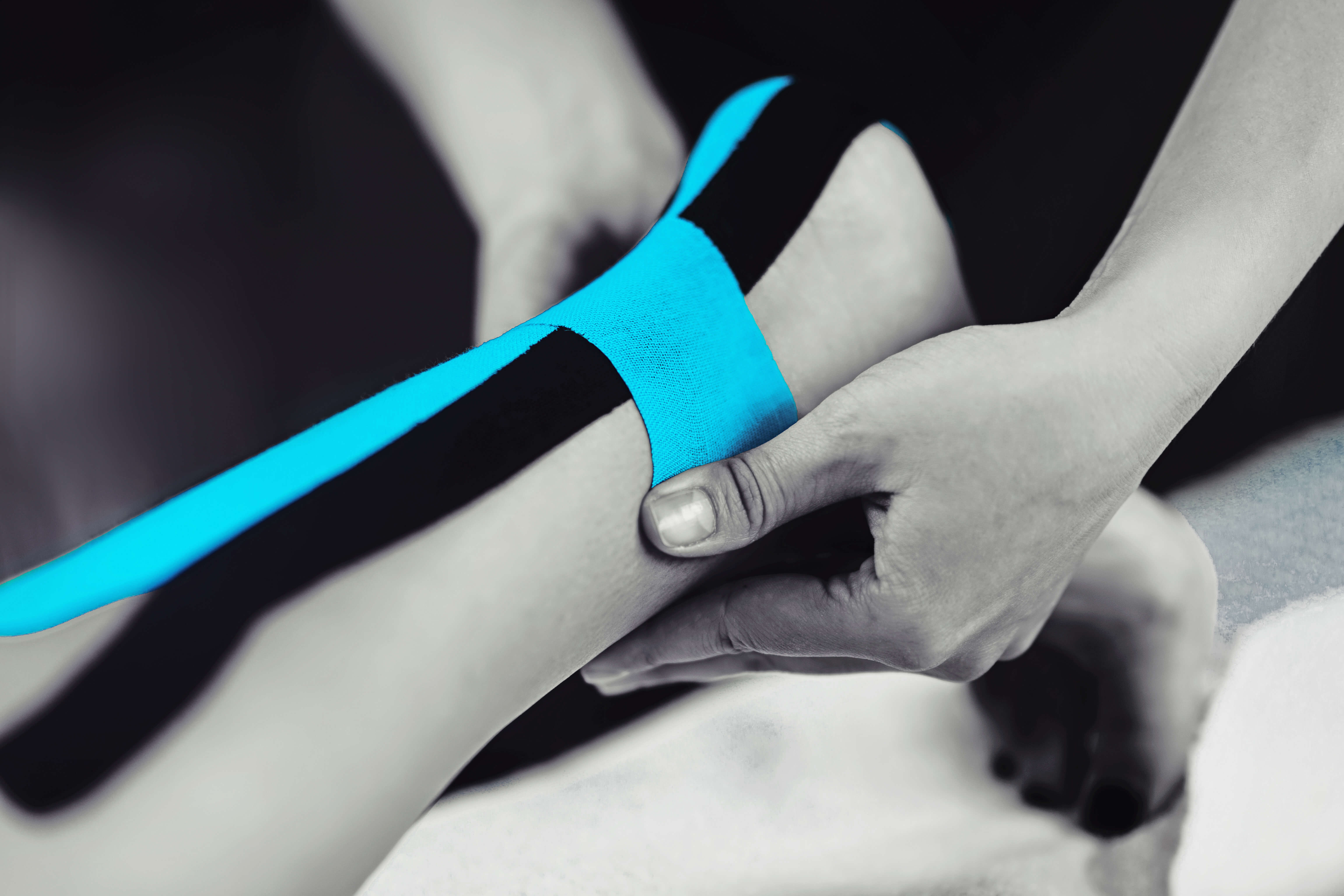Achilles tendonitis is a common injury with people who run longer mileage trails, do uphill training, sprints, or weekend recreational activities that overburden the Achilles tendon, for example – tennis, basketball, football, and gymnastics.
The Achilles tendon is a tough fibrous tissue that connects the heel bone with the calf muscles above. We use it together with the calf muscles to pull the heel up and stand on our toes during running, jogging, and jumping.
The Achilles tendon is also the strongest tendon in the whole body and can support our full weight. However, repetitive movements and high tension due to overuse of the tissue with limited blood supply can strain it and result in pain, stiffness, and inflammation, causing Achilles tendonitis (tendinitis).
Achilles tendonitis will make the spot above your heel red and swollen. Prolonged inflammation can result in more complicated injuries, including tears, ruptures, tendinosis, and tendinopathy. Therefore, it is much simpler to pay due care to prevent the tendonitis than to heal it later.
Preventing Achilles Tendonitis
There are simple yet effective preemptive strategies to avoid Achilles tendonitis you can do at home. Most of them can be done as a self-care method after consulting your podiatrist.
1. Warm up by walking
Don’t start with a strenuous activity immediately when you enter the sports court. Take at least 10 minutes to warm up with walking or gentle jogging before hitting the ground in full speed.
2. Use a heating pad
Another no-fuss, low-cost method for warming up and improving the blood circulation in the Achilles tendon area without walking is applying a heating pad, which softens the tissue and prepares it for better endurance.
3. Strengthen calves
Since calves work along with the tendon to lift the heel up, strengthening them with calf raises by standing on the toes and elastic bands exercise can help support the tendon during repetitive activity. Do single-leg raises or add weights if you need to increase intensity.
4. Choose low-impact activity.
Low-impact sports such as swimming or cycling can help prevent Achilles tendonitis. If you don’t want to quit your favourite high-impact activity, at least try to switch occasionally to something more moderate to let the tendon rest and heal naturally.
5. Increase effort gradually
When starting with a new exercise program, don’t go fоr maximum intensity straight away. Go for the low-key version, which most programs include for beginners.
6. Apply a compressive brace
Elastic silicone braces will provide support to your ankle and foot as you move, relieve pain, and prevent sore feet and overextending over your natural body limits.
7. Schedule a massage therapy
Sports massage is a mechanical treatment for improving the condition of the blood vessels and the tissue around your Achilles tendon. When done skilfully by a sports physiotherapy expert, massage can not only help with prevention, but also enable stronger performance and improve your athletic stamina.
8. Wear appropriate footwear
Always choose good sports and everyday shoes, especially if you have a flat foot or engage in a sport that requires anatomic insoles, ankle support, or anti-slippery outsoles.
9. Stretch
Stretching is a powerful self-help technique to relieve the pressure on the Achilles tendon. Stretch by leaning against the wall with your hands and putting one leg forward bent at the knee while the back leg is straight with the foot flat on the floor. You can also use a step ladder – place one foot with the ball on the step and let the other hang loose. Hold the stretch for 30 seconds on each leg for both exercises. Repeat 3 times.
It is important to remember that taking anti-inflammatory drugs can relieve instant pain but it can also be dangerous – inflammation that occurs in Achilles is a warning sign of overstretching that area and that over-the-counter painkiller can mask more serious symptoms and cause further injuries. Therefore, it should be the last resort without doctor consultation.
First Aid in Healing Achilles Tendonitis
Prevention is not always sufficient. Despite all cautionary measures, you still may get your Achilles tendon inflamed. Self-care methods you can do on your own if you get Achilles tendonitis include resting or raising your legs, putting ice and compression, and using a heel lift or a painkiller if that’s necessary. However, these are temporary solutions and you shouldn’t rely on them long-term. Regular practice of stretching and strengthening exercises as recommended by your physical therapist is a more effective treatment that can be used over extended periods and prevent overcomplicating the Achilles tendonitis symptoms. Shockwave Therapy can also be used by your physiotherapist to treat this condition.

